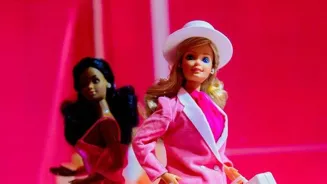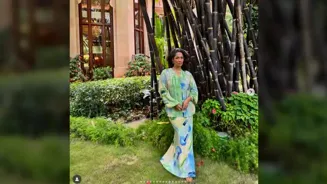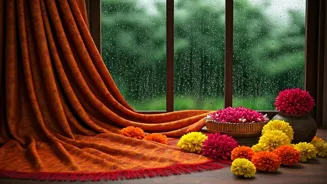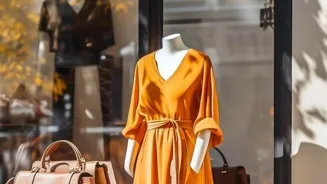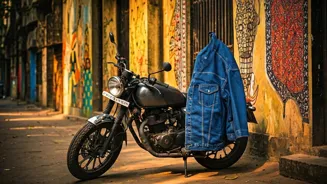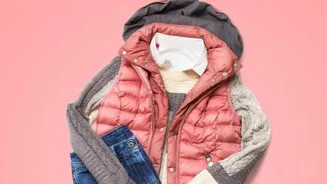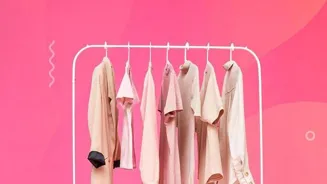Dive into the fascinating world where fashion and pop culture collide, shaping eras and identities. From Bollywood glam to global fusion, discover how trends reflect society's pulse. Unveil the stories
behind iconic styles in a journey through time and influence
Fashion ka role pop culture mein is a big one, boss! From bell bottoms ki zamana to ripped jeans now, clothes tell stories about what’s happening around us. It’s not just about looking good, it’s about showing who you are, what you believe in, and what’s trending.
Dekho toh, Bollywood films influence fashion so much! What actresses wear, young log copy karna chalu kar dete hain. Fashion aur pop culture, they go hand in hand, একদম!
Evolution of fashion from disco to athleisure
Think about it, the 70s disco scene. The flared pants, платформа shoes, shimmer and shine... it was all about freedom and groovy tunes! Then came the 80s, with its power shoulders and loud colours reflecting the growing economy and bolder attitudes.
Nowadays, you see athleisure booming – yoga pants, trainers everywhere – that shows people are focusing on health and comfort. Fashion isn't just following culture; it's part creating it, innit?
Fashion mirrors society, reflecting trends shaped by pop culture
Fashion, yaar, it's more than just clothes. It's a mirror reflecting society, a canvas for self-expression, aur ek loud speaker for the trends that define different times.
Pop culture, full of music, movies, and social movements, has a huge influence on what we wear, and fashion, in turn, shapes how we see ourselves and the world around us. It's a beautiful give-and-take, a continuous dialogue between style and society.
Let's unravel this fascinating relationship and see how fashion trends have become iconic markers of different eras in India and globally.
Bollywood shapes Indian fashion trends, blending traditional and modern styles for mass appeal
In India, no discussion about fashion is complete without mentioning Bollywood. Our film industry has been a major trendsetter since, well, forever! From the elegant sarees of the golden era to the vibrant salwar kameez of the 90s, Bollywood heroines have dictated what's hot and what's not.
Remember Madhuri Dixit's 'Didi Tera Dewar Deewana' outfit? Suddenly, everyone wanted that purple saree! And who can forget Kajol's simple yet chic looks in 'Kuch Kuch Hota Hai'? That movie defined college fashion for a whole generation.
Nowadays, Bollywood continues to inspire, with designers drawing inspiration from traditional crafts and modern silhouettes, creating a unique blend of desi and global styles.
Social media has further amplified this influence, with influencers and celebrities showcasing the latest trends and making them accessible to everyone. Plus, remember how the anarkali suit made a comeback after being featured in historical dramas?
Fashion often finds inspiration in our rich history too! The power of Bollywood lies in its ability to connect with the masses, and its fashion choices reflect the dreams and aspirations of millions.
From local festivals to weddings, Bollywood-inspired outfits are seen everywhere, cementing its role as a major influence on Indian fashion.
Indian fashion blends global trends with traditional roots, creating unique styles
While Bollywood reigns supreme in India, global fashion trends also have a significant impact. From the rebellious rock 'n' roll looks of the West to the minimalist styles of Scandinavia, different cultures have contributed to the ever-evolving world of fashion.
In the past, access to these trends was limited, but with globalization and the rise of the internet, international styles are now easily available in India. However, Indians don't simply copy these trends; they adapt them to suit their own tastes and preferences.
For example, ripped jeans might be paired with a traditional kurta, or a Western dress might be accessorized with ethnic jewellery. This fusion of cultures creates a unique and vibrant Indian fashion scene, where tradition and modernity go hand in hand.
Think of the bandhani print being used on modern dresses, or the simple kurta being styled with sneakers. It showcases India’s ability to embrace global trends while staying true to its roots.
Many Indian designers also take inspiration from local textiles and craftsmanship, showcasing them on international runways and contributing to the global fashion landscape.
This exchange of ideas and influences creates a dynamic environment, and it is continuously pushing the boundaries of fashion.
Music and fashion influence each other, shaping trends and identities
Music and fashion have always been intertwined. Musicians are not just performers; they're style icons who influence everything from clothing to hairstyles. Think about the grunge era of the 90s, where bands like Nirvana popularized the ripped jeans, oversized flannels, and combat boots look.
That style was a rejection of the glitzy 80s and represented a counter-cultural movement. Then came hip-hop, which brought with it baggy jeans, oversized t-shirts, bling jewellery, and sneakers. These styles wasn't just about clothes; it was about expressing identity, community, and rebellion.
In India, music videos have played a similar role, showcasing the latest trends and influencing young people's fashion choices. Remember the pop stars of the 90s and early 2000s? Their outfits were all the rage!
And today, rappers and hip-hop artists are setting new trends, with their street style looks becoming increasingly popular. Music is more than background noise; it's an integral part of the fashion ecosystem.
The artists also use fashion to make political statements, supporting causes, or celebrating their cultures.
Fashion reflects political beliefs, social issues, and supports movements
Fashion is often used as a tool to express political beliefs, social commentary, and support for social movements. During the freedom struggle, wearing khadi became a symbol of nationalism and self-reliance.
Later, during the feminist movement, women started adopting more androgynous styles, rejecting traditional gender roles in clothing. Today, we see similar trends, with people using fashion to raise awareness about environmental issues, social justice, and inclusivity.
Ethical and sustainable fashion is on the rise as consumers become more aware of the environmental and social impact of their clothing choices.
Wearing clothes made from recycled materials, supporting fair trade brands, and choosing vintage clothing are all ways to make a fashion statement that aligns with your values. Also, fashion shows are also increasingly being used as platforms to promote diversity.
Models of all shapes, sizes, and ethnicities are being featured in campaigns, breaking down barriers and challenging traditional beauty standards. Fashion's power lies in its visibility; it allows individuals to express themselves and communicate their beliefs to the world.
By choosing what we wear, we can send a message and contribute to social change.
Social media shapes fashion trends, influences behavior, and raises sustainability concerns
Social media has revolutionized the fashion industry, making trends more accessible and influencing consumer behaviour like never before. Platforms like Instagram, Facebook, and TikTok are now the primary sources of fashion inspiration for many people.
Influencers and bloggers showcase their personal styles, promote brands, and create trends that spread like wildfire. The rise of fast fashion has also been fueled by social media, with retailers quickly replicating trends seen online and making them available at affordable prices.
However, this has also led to concerns about sustainability and ethical production practices. The constant pressure to stay on top of the latest trends can encourage overconsumption and contribute to waste.
Despite the challenges, social media has also empowered consumers by giving them a voice and a platform to express themselves. Online communities have sprung up around different fashion styles, allowing people to connect, share ideas, and support each other.
Social media is not just a marketing tool; it is a dynamic platform that is shaping the future of fashion.
Future of fashion: sustainability, inclusivity, technology shaping industry for better world
Looking ahead, the future of fashion lies in sustainability and inclusivity. Consumers are becoming more conscious of the impact of their choices, and they're demanding more ethical and environmentally friendly products.
Designers are responding by exploring new materials, such as recycled fabrics and plant-based alternatives. Production processes are also becoming more sustainable, with brands focusing on reducing waste and conserving resources.
Inclusivity is another key trend, with brands embracing diversity and featuring models of all shapes, sizes, ethnicities, and abilities in their campaigns. The fashion industry is slowly but surely becoming more representative of the world we live in.
Technology will also play a major role in the future of fashion, with innovations such as 3D printing, virtual fashion shows, and personalized shopping experiences. These technologies will allow designers and retailers to be more creative, efficient, and responsive to consumer needs.
The future of fashion is open, exciting, and full of possibilities! It is a future where fashion is not just about looking good, but also about feeling good, doing good, and creating a more sustainable and equitable world.
AI Generated Content. Glance/InMobi shall have no liability for the content